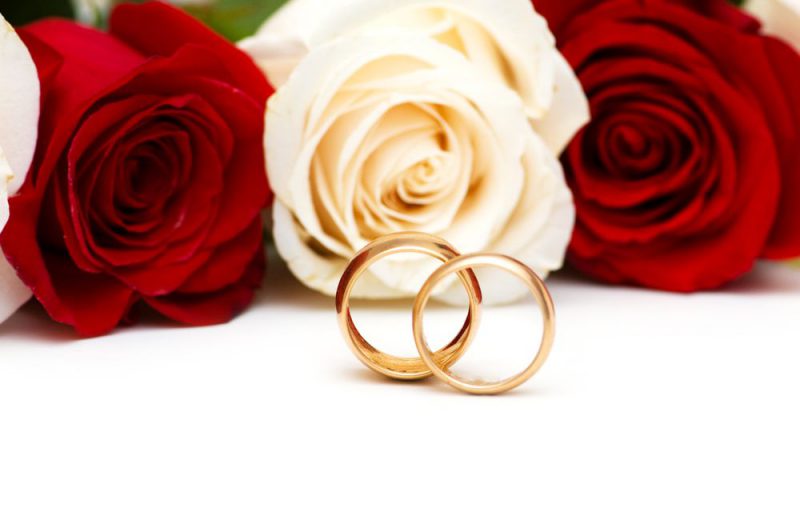Weddings in Russia after the Revolution of 1917 and during World War II
Revolution is not only fundamental political and economic changes. A revolution is also a transformation of the private life of people and of society as a whole. We have already told you about the NEP (New Economic Policy) and the culture of Soviet society in the first years after the revolution, about the emigration of this period of Russian history. Today we will continue with our series about Russian wedding traditions and cover the post-Revolution period.

Post-revolutionary freedom
What does a person and society begin with? Typically, with a family. How is a family formed? Usually, after the wedding. This simple thesis was rethought by the Bolsheviks, and the marriage of two people, as well as its social function, has changed.
On December 18, 1917, a new organization appeared in young Soviet Russia – a civil registry office or simply ZAGS (ЗАГС). This body assumed the functions of abolished churches. From now on, birth and death, as well as the creation of a new family or, as they used to say, the “cell of society”, were registered in ZAGS. Now, people became spouses in the face of the law and not of God.
Soviet and party ideological bodies launched an effective campaign to combat religious and pre-revolutionary traditions. The splendor and luxury of old wedding rituals, religious and estate prejudices, and the secondary position of women in the family were condemned. Traditional folk wedding ceremonies became a thing of the past.
The old-school wedding ceremony was gradually replaced by the so-called “red wedding”. The union of a man and a woman was created under a new slogan “no one owes anything to anyone”: the bride and groom now gave no oaths to each other. The very ceremony of registering a marriage now came down to signing one document in which the spouses wrote with their own hands, “I am entering into marriage without coercion”.
Another feature of “red weddings” was their asceticism. Ideologists urged the newlyweds to abandon such attributes of the wedding ceremony as rings (since this is an ornament), a white dress of the bride, a chic feast with a lot of alcohol. All this did not correspond to the appearance of a man of a communist future, modest, hardworking, devoid of great claims. However, such ascetism can also be explained by the poor economic situation and the low standard of living of the inhabitants of the USSR of this period.
The decor of the rooms where people used to get married was according to the procedure: the room had a table covered with a red tablecloth, a carafe of water, a registration book and portraits of communist party leaders on the walls. No solemnity and no festive atmosphere.
Now, after the marriage was registered with the civil registry authorities, the newlyweds went to celebrate this event with friends of like-minded people. As a rule, this event was celebrated in assembly halls or red corners decorated with propaganda posters and wall newspapers. A distinctive feature of the “red wedding” was the absence of parents and close relatives of the bride and groom at the celebration. The wedding did not become a family event, but a socio-political event.
Now, the spouses were regarded as absolutely equal members of society. In addition, illegitimate children were equated in status with children born in an official marriage. The social status of future spouses was no longer taken into account: in the registry books you could find the records of marriages between an army officer and an actress or a lawyer and a cleaner – that is, unequal marriages that were previously unthinkable became a reality.
Changed “normal”
In the first years after the revolution and during the NEP, when the “dashing twenties” raged in the West, a new form of family life appeared in the Soviet Union – an open and officially approved cohabitation of three people. Typically, relations of this format affected people of art who easier than others succumb to passions and to whom love triangles were not something unusual.
The most famous union of the “three hearts” was Lilya Brik with her husband Osip Brik and poet Vladimir Mayakovsky. Their open triple alliance was not condemned in society, and many followed their example allowing themselves liberties in family life. This led to the fact that cheating on a spouse for some time was not listed as the most common reason for divorce (which was now officially allowed). However, this “lack of exclusivity” and free relations lost their popularity by the late twenties and early thirties, and a more familiar form of family life reigned in society again.
Frontline love
Unfortunately, a peaceful and calm time did not last long. In 1941, when Hitler attacked the Soviet Union, the institution of family and marriage again underwent major changes. The reason for these changes was very simple – men went to the front leaving their girlfriends and wives in the cities and not knowing if they would meet again. This was especially dramatic, according to historians, for girls 17-25 years old who for the most part already had chosen their partners but after the war remained “eternal brides” (many girls, learning about the death of their beloved ones, refused to marry again and stayed faithful to the dead ones or not believing in their death).
But despite all the horrors of the war, life went on, and love, as the strongest feeling, often caught soldiers in the trenches and on the battlefields, where women doctors, nurses, reporters, etc. desperately fought shoulder to shoulder with men. In wartime conditions, the battalion commander had the right to marry his soldiers. After all, no one knew what the next day was preparing for them, so military weddings were modest, but memorable. The bride and groom did not receive any papers, they were called husband and wife only according to the commander. Needless to say, there were no beautiful dresses and feasts. Only joyful congratulations of fellow soldiers, music, songs and dances. At the end of the war, these marriages were recognized as official in the registry offices if people still stayed together, or cancelled if their feelings disappeared after the war.
It is worth noting that the Nazis also allowed Russian people to marry in the occupied territories. For that, it was necessary to withstand three conditions: 1) to pay a fee for marriage; 2) choose a spouse from the people living in this occupied territory (the Nazis were afraid of partisans); 3) pay a fee for a document certifying marriage. Surprisingly, these marriages after the war were also recognized as valid if they did not contradict the laws of the USSR (for example, if marriages were not concluded between close relatives).
Conclusion
Time and history show that every crisis or war has an end, and life begins to flow again, however according to the laws of the changed times. When the hardships began to slowly be forgotten, marriage and family became one of the most important elements of life for the Russian people. How it all changed and how people got married in the post-war Soviet era, we will tell you soon in a new article, stay with us!

Culturologist, professor of Russian as a foreign language and promoter of Russian culture.
Aleksandra gives Russian lessons via Skype.






